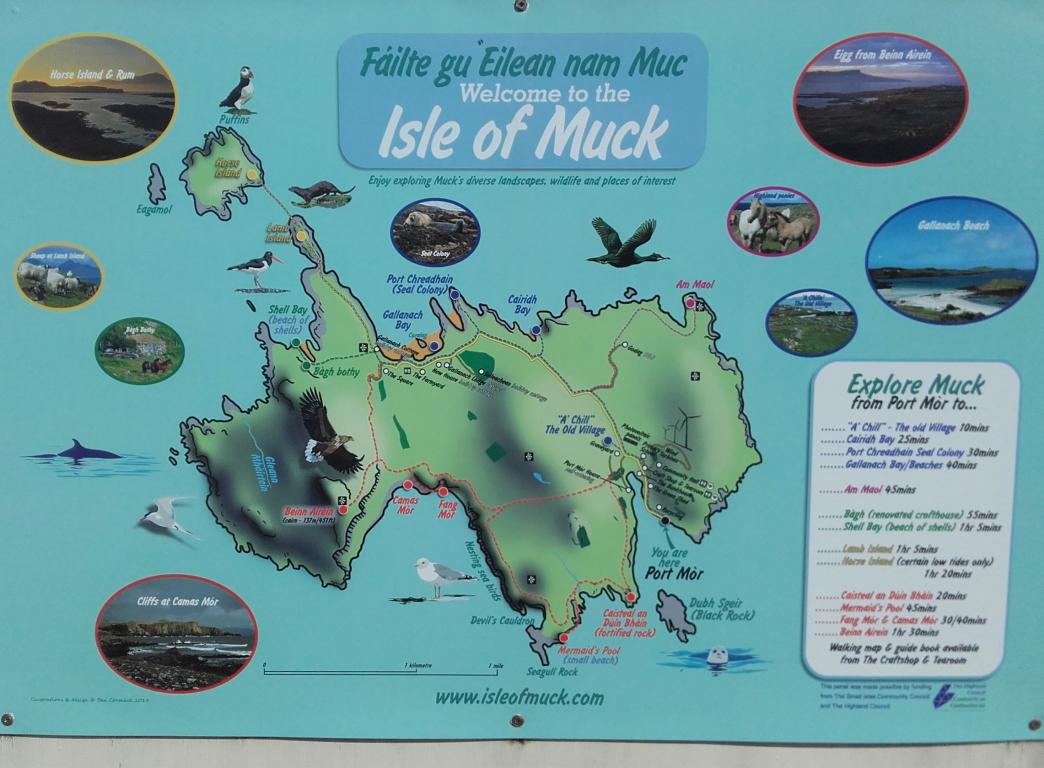
How Muck Got Its Name
By Marg Greenwood
 Board map of Muck which greets the visitor arriving from ferry
Board map of Muck which greets the visitor arriving from ferryImage provided by Marg Greenwood
It was customary in Samuel Johnson's time for lairds of islands to be addressed as the name of their island. For example, to greet the laird of Coll you would say, "Good evening, Coll." James Boswell wrote of himself and Johnson meeting Isle of Muck.
Boswell relates:
It was somewhat droll to hear this Laird called by his title. Muck would have sounded ill; so he was called Isle of Muck, which went off with great readiness.
Boswell went on to write that this laird insisted that Isle of Monk was its proper name:
There has been many a raised eyebrow by people not used to the name, and seemingly this laird was embarrassed by his being addressed simply as Muck.
But many sources point to the name of Muck (Scottish Gaelic: Eilean nam Muc) as meaning pig, or swine. Muc na mhara means sea-pig, a generic name for whales and dolphins. Historically the island was known as a favourite haunt of the wild pig and it was said that Muck's shape was that of a pig. In the Highlands, the boar's head and flesh were eaten with relish, but the domestic pig's meat was deemed inedible. Muck was seen as a sanctuary for the wild boar. Folklore tells that whenever their number grew too many for the small island they were pushed off the coast to swim to Eigg and from there to Skye, and back to the mainland. The idea was to improve hunting. How the pigs were prevented from swimming back to the Muck shore as soon as they were pushed into the water, is not explained.
DISCOVER MORE STORIES FROM THE MARG GREENWOOD COLLECTION
Enjoyed this story and want to read more? Explore more of the beauty of the natural and cultural heritage of the islands of Scotland through the eyes of Marg Greenwood, the submitter of this story, in her fascinating book Return to Muck.